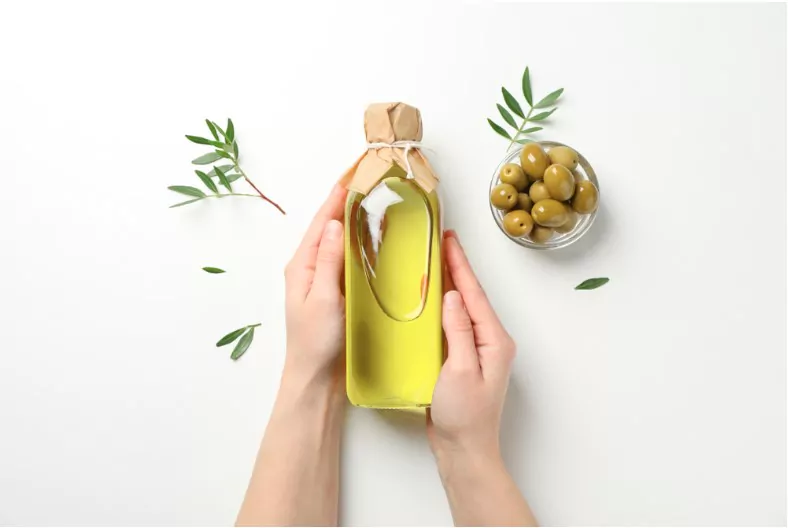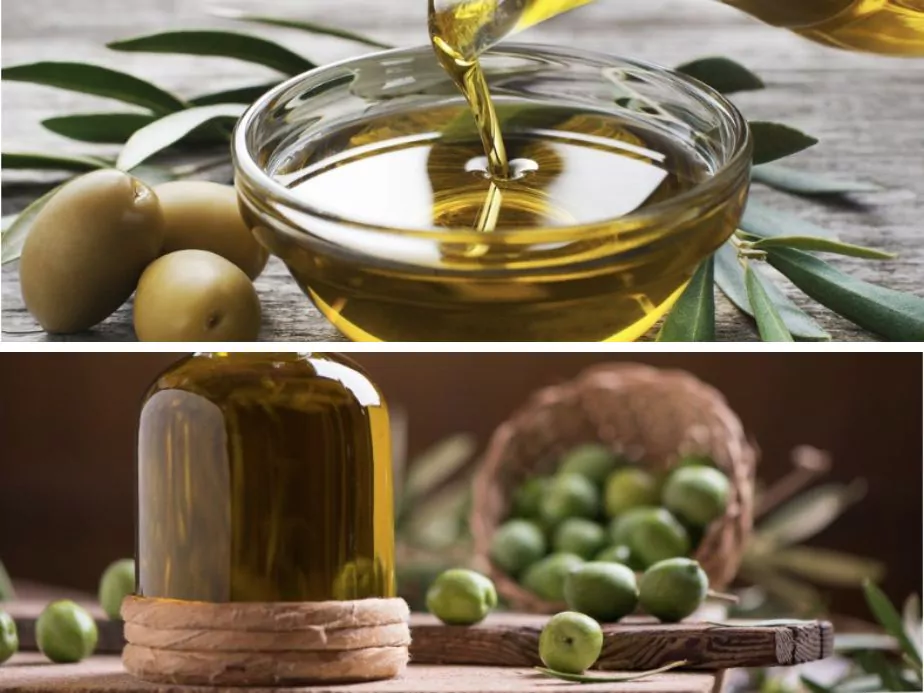How to Cook With Olive Oil? Tips & Recipes

In the ever-evolving culinary world, olive oil has secured a prime position, establishing itself as a versatile and must-have ingredient. When it comes to sautéing and stir-frying, light or regular olive oil, known for its higher smoke points, is the top choice. These oils seamlessly introduce a mild yet rich flavor, especially when vegetables, meats, or seafood are cooked. Roasting, another beloved cooking method, is elevated to new heights when ingredients are bathed in olive oil and adorned with herbs and spices, ensuring a tantalizingly crispy exterior with a juicy heart.
The cold allure of salads finds its match in extra virgin olive oil. When whisked with vinegar, lemon juice, and seasonings, it transforms into a dressing that’s both vibrant and flavorful. And for those with a sweet tooth, integrating olive oil into baking can redefine classics, offering cakes and muffins a distinct, moist character.
Taking a further plunge into the sea of olive oil wonders, grilling meats and veggies after a light brush of this golden liquid not only ensures they don’t stick but adds a layer of taste that melds beautifully with the smokiness. Delve into the world of homemade condiments, and olive oil emerges as the hero again; mayonnaise made with it has a rich, unparalleled flavor.
Pastas and risottos, staples in many homes, shine even brighter with a generous drizzle of extra virgin oil, sometimes combined with garlic, chili, and herbs for that extra kick. Then there’s the realm of infusions. A bottle of olive oil, when combined with chosen herbs and spices, metamorphoses into an aromatic delight, perfect for embellishing dishes or as a delectable dip for crusty bread.
Deep frying might not be the most common use for olive oil, given its cost, but for those special occasions, it can introduce a healthier, distinct taste to foods. Marinades, on the other hand, love the embrace of olive oil. Meats and veggies marinated in an olive oil blend are a symphony of flavors waiting to be unleashed upon cooking. And in the sphere of unconventional yet delightful uses, consider olive oil popcorn for a unique movie snack, or, for the truly adventurous, olive oil ice cream – a gourmet experience where creamy textures meet fruity undertones.
1 What's the Difference Between Extra Virgin, Virgin, and Light Olive Oil?
Extra Virgin Olive Oil (EVOO)
- Origin & Processing: Extra Virgin Olive Oil is the highest grade and the highest quality of olive oil available. This oil is extracted from olives using a cold-pressed method, without the application of heat or chemicals. This means that the oil retains more of its natural flavors, nutrients, and health-promoting properties.
- Flavor & Appearance: EVOO has a robust flavor that can range from a fruity taste to a peppery finish. The oil is typically darker in hue, ranging from golden yellow to deep green, reflecting the richness of ripe olives.
- Health Benefits: Being the most unrefined version, EVOO is loaded with antioxidants, monounsaturated fats, and oleic acid. All these contribute significantly to heart health. The presence of Vitamin E and polyphenols further amplifies its health advantages.
- Best Uses: Due to its robust flavor and low smoke point, EVOO is best used for salad dressings, drizzling over cooked foods, or for low-heat cooking.
Virgin Olive Oil
- Origin & Processing: Virgin olive oil is quite similar to EVOO in terms of extraction. It’s cold-pressed, sans chemicals. However, virgin olive oil may have some minor defects that prevent it from being classified as ‘extra virgin’.
- Flavor & Appearance: While it possesses a flavor profile similar to EVOO, the intensity is slightly reduced. It might not have the peppery finish that a high-quality EVOO often exhibits.
- Health Benefits: Virgin olive oil still packs a punch when it comes to health benefits. It’s rich in monounsaturated fats, promotes heart health, and offers a good dose of Vitamin E and antioxidants, though slightly less than EVOO.
- Best Uses: It’s versatile. While it might not have the pronounced flavor of EVOO, it’s suitable for both cooking and finishing. Its smoke point is a bit higher than EVOO but still lower than refined oil, making it good for medium-heat cooking.
Light Olive Oil (or Extra Light Olive Oil)
- Origin & Processing: ‘Light’ does not refer to the calorie content but the flavor. Light olive oil undergoes a refining process, which removes imperfections. This refining might include heat, filtration, or chemicals, making it lose some of its natural properties.
- Flavor & Appearance: This oil has a much more neutral taste and lighter color, making it more akin to common vegetable oil than to a rich EVOO.
- Health Benefits: While it still has monounsaturated fats, it lacks many of the antioxidants found in virgin and extra-virgin varieties.
- Best Uses: Due to its neutral taste and higher smoke point, light olive oil is ideal for high-heat cooking, deep frying, baking, or any culinary venture where you don’t want the oil’s flavor to dominate.

2 Types of olive oil
- Extra Virgin Olive Oil (EVOO): This is the highest grade and highest quality olive oil. Cold-pressed without the use of extreme conditions or refined oils, extra virgin olive oil retains its true olive essence. It has a robust flavor, sometimes with a peppery finish. EVOO is ideal for salad dressings or drizzling on dishes.
- Virgin Olive Oil: A notch below EVOO, virgin oil still has a great flavor. It’s less expensive than its ‘extra virgin’ counterpart but is a must-have for those seeking quality without the highest price.
- Regular Olive Oil (Pure Olive Oil): This oil combines refined olive oil and virgin olive oils. It offers a more neutral taste, making it versatile for various cooking purposes.
- Light Olive Oil & Extra Light Olive Oil: Don’t be deceived by the name; ‘light’ here refers to the flavor, not its calorie content. It has undergone more processing, resulting in a more neutral flavor and higher smoke point.

3 Some tips to keep in mind while using the best olive oil for cooking
Know Your Olive Oils
Different olive oils have varying smoke points and flavor profiles:
- Extra Virgin Olive Oil (EVOO): Ideal for low-heat cooking, salad dressings, and finishing dishes due to its robust flavor and low smoke point.
- Virgin Olive Oil: A versatile option, it’s suitable for medium-heat cooking and dishes where a milder olive flavor is desired.
- Regular (Pure) Olive Oil and Light Olive Oil: These have a higher smoke point, making them apt for high-heat cooking or frying.
Avoid Overheating
Exceeding the smoke point of any oil, including olive oil, can produce harmful compounds. For olive oils with a low smoke point, such as EVOO, always use low to medium heat. Light and pure olive oils can handle higher temperatures.
Storage Matters
Olive oil bottles should be stored in a cool, dark place, away from direct sunlight or extreme conditions. This helps in retaining the oil’s flavor, color, and health-promoting properties. Remember, olive oil doesn’t improve with age. Use it within a year or two of purchasing.
Tasting is Key
For dishes where olive oil is a primary flavor component, such as salad dressings or drizzled-over bread, always taste your oil first. Fresh EVOO should be fruity, sometimes with a peppery finish. If it tastes metallic, sour, or stale, it might be rancid.
Pair with Suitable Dishes
While light olive oil has a neutral taste akin to other vegetable oils, EVOO and virgin olive oil impart a distinct flavor. For authentic Indian cooking or dishes requiring a neutral oil flavor, consider using light olive oil or mixing it with other commonly found oils like sunflower or canola oil.
Mix and Match
You can blend olive oil with other oils to achieve a desired smoke point or flavor profile. Mixing EVOO with a higher smoke point oil, like avocado oil or canola oil, can be useful when you need a bit of olive flavor without the risk of overheating.
Use Sparingly
Good quality olive oil, especially brands like California Olive Ranch, can be expensive. To savour its flavor without overusing it, consider drizzling it over dishes or using it in combination with other oils.
Health is Wealth
Olive oil, particularly EVOO, is rich in monounsaturated fatty acids, which are beneficial for heart health. It also contains Vitamin E, polyunsaturated fats, and antioxidants. However, it’s essential to note that olive oil is calorie-dense. Moderation is crucial, even with the healthiest oils.
4 Wrapping Up
When choosing olive oil, it’s essential to consider the purpose. For the best flavor and maximum health benefits, extra virgin is your best bet. For a balance between flavor and versatility, virgin olive oil is apt. If you need an oil for high-heat cooking with a mild flavor, light olive oil stands out.
Remember, the healthiest oils are often those that have undergone minimal processing. Thus, while light olive oil may be suitable for certain cooking applications, the heart-healthy benefits of EVOO and virgin olive oil make them staples in a health-conscious kitchen.
Community Q&A
About This Article
This article has been viewed 314 times.



